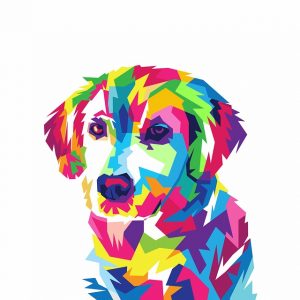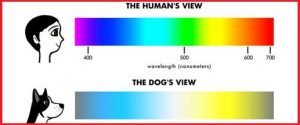Last updated on May 23rd, 2021 at 03:48 am
Table of Contents
What color is a dog most attracted to
Are you wondering what color your dog is most attracted to? The short answer is Yellow and Blue. Pretty bland?

These are the colors that your dog finds easy to distinguish and can easily recognize. This article will elaborate on the dog’s vision, the colors they can see, and those they have difficulty identifying. Read on to find out more about how your dog sees the world and how you can help them.
Are dogs color blind
The common belief was that dogs are colorblind and can see only in shades of gray. It is why colors were never considered an essential factor for dogs. However, this was proven false when researchers found out that dogs can indeed see in color. But, they see lesser colors when compared to humans. They also do not see the colors as rich or vibrant as we do. The average dog owner still considers his pet colorblind and has no idea about their color preference. Rest assured, research after research has shown that this is not the case, and the man’s best friend can indeed see color, although to a limited extent. A rough comparison would be that they can see colors comparable to the vision of a colorblind human.
How does a dogs vision differ from humans
We have read about how rods and cones are responsible for vision in our high school biology. Dogs have more rods than us, which translates to better night vision for them. Cones are where humans outscore dogs. We have three sets of cones, which is called a trichromatic vision, whereas dogs only have two sets of cones: a dichromatic vision. The three cones that we have allow us to see red, blue and green, and all the colors they constitute. The two cones that dogs have allow them to see blue and yellow and all their combinations. In simple terms, dogs can see way less colors than humans because they do not have a full vision spectrum.

A full-spectrum of colors that a person can see are red, orange, yellow, green, blue and violet while a dogs color spectrum consists of, grayish brown, dark yellow, light yellow, grayish yellow, light blue and dark blue which is simply the combination of the two colors yellow and blue. It does not mean that all other colors are not visible to your dog. Other colors appear with a grayish hue to a dog’s vision. A dog can also differentiate between the lightness and darkness of a color.
You might feel sorry for your dog that it can’t see our vividly colorful world the way you can. But, what the dog loses in color vision, it gains in other senses. It has a better night vision, an acute sense of smell, and the ability to hear ultrasonic sounds.
So, it is clear that we don’t take the dog’s color preference into account when buying dog products, toys, and accessories. The most common colors we see in pet stores are red, orange, and pink. Color is not the only factor that a dog takes into account when distinguishing objects. The dog also has the ability to distinguish between lightness and darkness of the color of an object. When the dog has difficulty identifying the object from its color, it tries to identify by its shade.
So, What color toy should I get my dog
When you walk into a pet store, you will realize that just about every toy and accessory is designed to attract you rather than the dog. You should take the initiative in selecting toys and accessories that will be attractive to your dog.
Here are some awesome toys that your dogs will love and less likely to have difficulty identifying.
Why is it important what colors dogs can see?
You might be wondering the importance of colors in your dog’s daily life. Having the right color toys and accessories can mean that the dog can easily identify them and does not have a hard time finding them. It also means that the dog does not lose its toys quickly. Don’t you recall your dog scrambling for a toy while it is right in front of them?
Colors also play a very significant factor when it comes to dog sports. The colors that a handler wears or the color of the course’s obstacles can adversely impact the performance of the dog. It is essential for the handler to contrast their clothing with that of the background so that the dog can easily identify the signals. Clothing that blends with the background will mean that the dog will have a hard time seeing the signals and can miss them, leading to a mistake.
So, keeping colors into account when buying products for your dog will help your dog as well. While yellow is certainly not as attractive to us as a baby pink or flaming red, your best friend certainly seems to think so.
References
https://www.cambridge.org/core/journals/visual-neuroscience/article/color-vision-in-the-dog/5A30E35A384D10B6A2B46B01C896D3D5
https://royalsocietypublishing.org/doi/10.1098/rspb.2013.1356
https://onlinelibrary.wiley.com/doi/abs/10.1017/S1464793102005985
Comentarios
Publicar un comentario